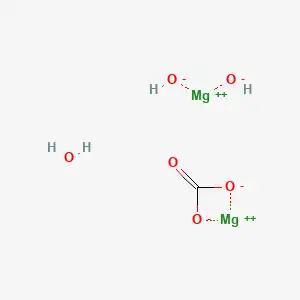
Magnesium Carbonate Light Powder
Brand: Messi Biology
Place of production: CHINA
Weight: 20KG
Product description: Messi Biology Magnesium Carbonate Light Powder comes from China with abundant resources.
Categories : Magnesium Carbonate
Physical Property
The Molecular Formula of magnesium carbonate :xMgCO3?yMg(OH)2?zH2O
Molecular weight: 365.31(international standard)
Appearance: white amorphous powder.
Magnesium Carbonate Light Powder
Light magnesium carbonate belongs to basic magnesium carbonate, its chemical formula is: xMgCO3?yMg(OH)2?zH2O. because of the small stacking density, it is widely used as filler and reinforcing agent for rubber products, and the product is very popular in domestic and international markets.
Light Magnesium Carbonate is an inorganic compound with the chemical formula MgCO3. Light Magnesium Carbonate is a common antacid drug that is used Pharmaceutical Aid; Light Magnesium Carbonate contains not less than 40.0 per cent and Not more than 45.0 per cent of MgO.

Messi Biology Basic Magnesium carbonate is made by carbonization and calcination. The company has self-produced mine raw materials and semi-finished products testing means, the production line is mature and stable. The product quality is stable and the performance is good. Can meet the needs of customers in different industries.
We are Manufacturer and Exporter of Light Magnesium Carbonate. This chemical is used in flooring, Fireproofing, Cosmetics, Toothpaste, pharmaceutical companies and research centers across the country. Our Chemical is highly effective and accurate in composition. These Chemicals must be handled with proper care. We pack these Chemicals using superior quality material before offering.
A white very light-weight powder (and bag of this material is like a bag of feathers). It is practically insoluble in water. This is not the same material as magnesium carbonate (magnesite).
MagCarb is very refractory, it does not decompose and release its MgO to the glaze melt as readily as other sources. It is a good example of the need to consider mineralogy and material-level physics in addition to chemical makeup (when using glaze chemistry to adjust and fix glazes). Two glazes may have the same calculated chemistry, but the one using the MagCarb to source the MgO will not be melted as much.
MagCarb mattes glazes. MgO in sufficient percentages in glaze melts, is a classic matting agent. However, since magnesium carbonate is so refractory and does not readily release MgO, the matting mechanism is simply that it is refractory as a material and inhibits smooth-out of the melt (especially if added in larger percentages or employed at lower temperatures where making a good matte is more difficult).
Magnesium carbonate crawls glazes because it decreases melt mobility. The exceedingly small particle size of the material increases shrinkage. MgO, in the portion that does disperse into the melt, has a high surface tension, that definitely plays in the melt pulling itself into islands. Up to 35% can be found in some recipes.
MagCarb has a very high Loss on Ignition, this could cause glaze surface issues. Dolomite and talc more readily release their MgO to the glaze melt for a higher temperature glazes. There is conflicting information on the decomposition temperature, sources report figures that vary from 350C to 650C. Thus it is possible that a host glaze could be already fluid before this material has finished gassing, trapping it within to create the glass equivalent of an Aero chocolate bar. If you use a large percentage of this in a glaze (for crawling for example), it may be wise to halt the kiln at 650C and soak during the fire up. Or do a test firing to 700C, cool the kiln quickly and check the melted state of the glaze.
